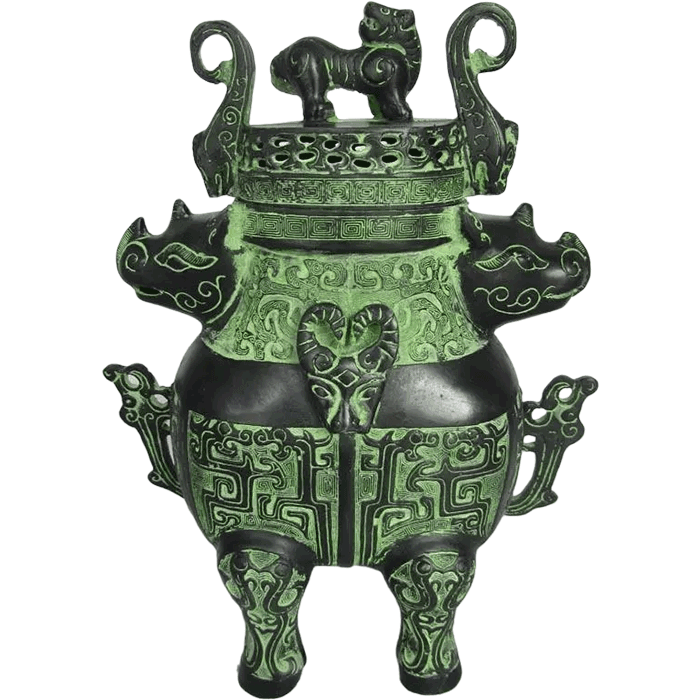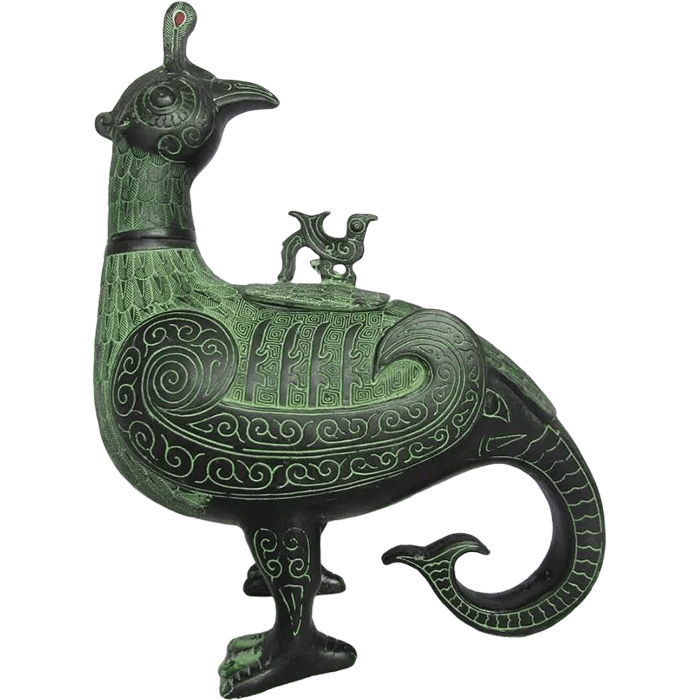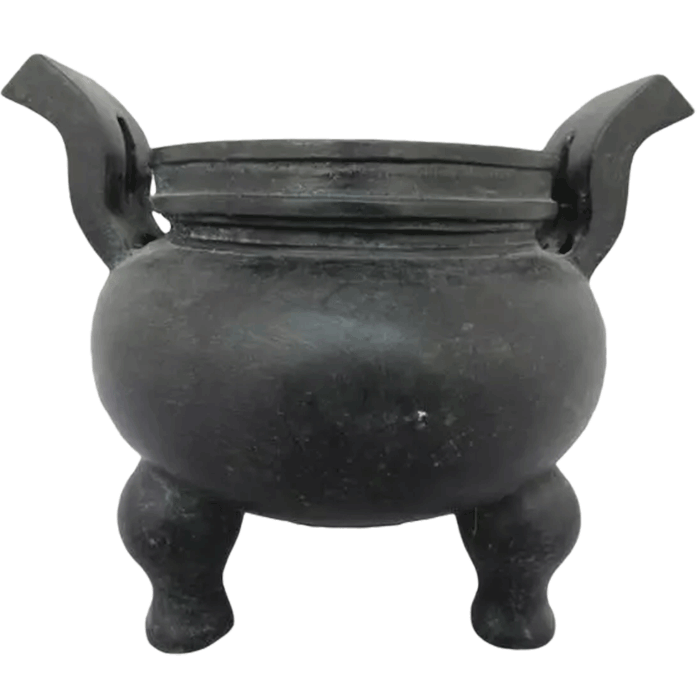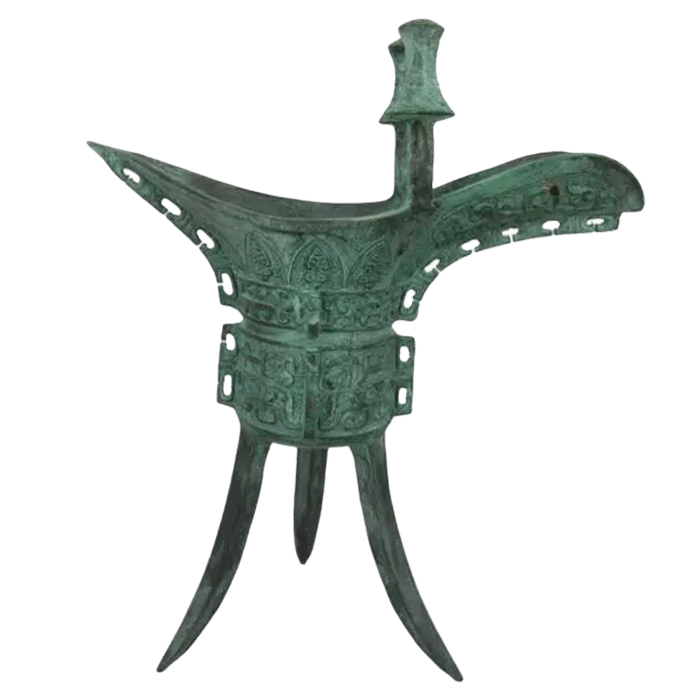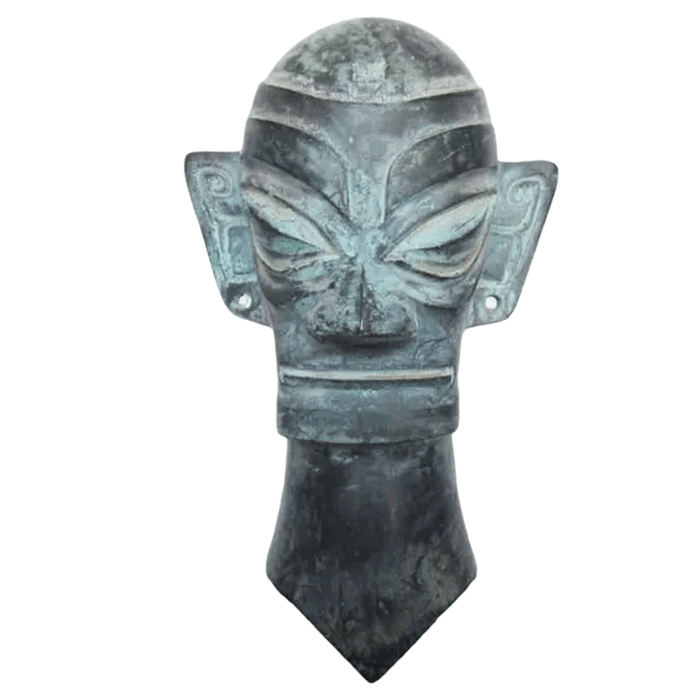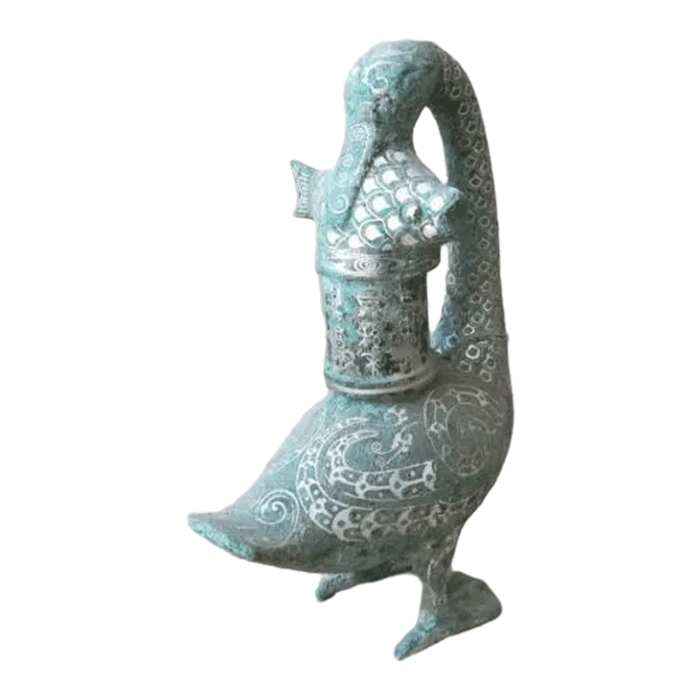Changxin Palace Lantern and Bronze Galloping Horse
Changxin Palace Lantern
Western Han Dynasty
China's first light
Changxin Palace Lantern of the Western Han Dynasty, bronze ware of the Han Dynasty in China, unearthed in 1968 in Mancheng County, Hebei Province (on a cliff about 1.5 kilometers southwest of Mancheng County, Baoding City, Hebei Province today), from the tomb of Dou Wan, wife of Liu Sheng, King Jing of Zhongshan, and is now in the Hebei Provincial Museum . Because the word "Changxin" is engraved on the lamp, it is named "Changxin Palace Lantern".
Heritage History
According to the textual research of the inscription, this lamp was cast in 172 BC (the era of Emperor Wenwen of the Han Dynasty), and the original owner of the lamp was Liu Jie, Marquis of Yi, Yangxin.
Later, Liu Jiezi liked to "remove the guilty country", and the lamp was confiscated into the "insider" (official name) of the Shaofu, and belonged to Changxin Palace.
Changxin Palace is the palace of the empress dowager Juxin. Emperor Wen's empress Dou was Liu Sheng's grandmother, and Emperor Jing was the empress dowager and was very powerful. Later, Empress Dowager Dou gave the lamp to a woman named Dou Wan in her natal family. Dou Wan regarded the copper lamp as a treasure and buried the lamp with her in the tomb after death.
Heritage features
The Changxin Palace Lantern is 48 centimeters high and 44.5 centimeters tall. The whole body is gilded, and the body of the lamp is an elegant and quiet court lady sitting on the lamp. Hollow, the whole is composed of six parts: head, body, right arm, lamp holder, lamp panel and lampshade, all of which can be disassembled.
The court lady wears wide-sleeved underwear and long robes, holds the lamp holder in her left hand, and raises her right arm to communicate with the top of the lamp, forming a flue. The burning gas and dust can be deposited in the palace lady's body through the right arm of the palace lady, and will not be dissipated into the surrounding environment in large quantities. The lampshade is composed of two curved plates, which can be moved to adjust the light intensity and direction. The lamp panel has a handle, and there is still rotten wood inside. The seat is bean-shaped. A total of nine inscriptions of 65 characters are engraved on the body, respectively recording the capacity, weight and owner of the lamp.
Heritage value
Changxin Palace Lantern has changed from the mysterious and heavy bronze vessels in the past, and the whole shape and decoration style appear to be stretched, light and gorgeous. It is a practical and beautiful lamp treasure. It can be called "China's first lamp". Take the method of casting separately and then synthesizing them as a whole. Experts in archeology and metallurgical history unanimously agree that this lamp is second to none among the palace lamps of the Han Dynasty due to its exquisite design and high level of craftsmanship.
For a long time, Changxin Palace Lantern has been widely praised as the pinnacle of Chinese arts and crafts and an important representative of national crafts. This is not only because of its uniqueness, rarity and preciousness, but also because of its exquisite craftsmanship and ingenious and unique artistic conception.
Horse Stepping on a Flying Swallow (Bronze Galloping Horse)
Eastern Han Dynasty
China travel logo
Ma Ta Feiyan, also known as Ma Chao Longque, Bronze Benma, Lingyun Benma, etc., is an Eastern Han bronze ware unearthed in Leitai Han Tomb in Wuwei City, Gansu Province in 1969. It was unearthed from the tomb of Zhang Mou, a military officer guarding Zhangye during the Eastern Han Dynasty, and his wife, and is now in the Gansu Provincial Museum.
In October 1983, "Horse Stepping on Flying Swallow" was identified as a Chinese tourism symbol by the National Tourism Administration, and it has been used ever since.
Heritage features
Ma Tafeiyan was made around 220 A.D. It is 34.5 cm high and 41 cm long. The galloping horse was neighing with its head held high, its feet raised and leaping, and its hoof was stepping on a flying swallow. From the analysis of mechanics, "Horse Stepping on Flying Swallow" has found the center of gravity, resulting in stability.
Ma Ta Feiyan has a vigorous and handsome image, with a unique style. The horse is neighing with its head held high, its trunk is strong and its limbs are slender, its legs and hooves are light and nimble, its three legs are flying in the air, galloping forward, and one foot is riding on a sparrow. A huge horse steps on the back of a galloping sparrow, and the little sparrow looks back in surprise, showing the majestic posture of a horse soaring in the air and running fast. Its bold conception and romantic technique give people a thrilling feeling, which is amazing.
The artist ingeniously uses lightning-like moments to vividly express a brave and vigorous Pegasus horse galloping through the clouds, reflecting the spirit of striving for progress and boldness and enterprising in the Han Dynasty. The work is not only ingenious in conception, but also exquisite in craftsmanship; it not only focuses on vividness, but also has realistic shapes. Measure the bronze galloping horse according to the standard scale of a good horse mentioned in the ancient Sutra of Horses, and almost no one is out of scale, so some people think that it is not only an outstanding work of art, but also the standard of horses.
Origin of the name
Regarding the name of "Horse Stepping on Flying Swallow", there are mainly the following theories for a long time:
"Bronze Galloping Horse" says
The shape of the bronze horse figurines is extraordinary, with its head raised and neighing, its hooves soaring into the air, galloping like lightning. Therefore, after Mr. Guo Moruo's appraisal, it was named "Bronze Galloping Horse" because it is made of bronze, also known as "Bronze Galloping Horse". ", which is also the earliest name for this bronze horse figurine.
"Horse Stepping on Flying Swallow" says
Although the title of "Bronze Galloping Horse" is relatively intuitive and clear, the subtlety of this bronze horse figurine is that there is a flying bird under its heel. The name "Bronze Galloping Horse" is obviously not enough to express its romantic artistic conception, so Some people call it "horse stepping on a flying swallow" to show that the galloping horse is galloping across the swallow's back.
"horse rides on a dragonfinch" says
Regarding the theory of "horse stepping on flying swallows", some people have put forward different opinions. They think that the flying birds attached to the bronze horse figurines do not look like swallows in terms of shape, but sparrows. bird"
"Flying Monkey" says
The first few names seem reasonable, but it is not difficult for a discerning person to find out after a careful taste - all of them have obvious characteristics of modern Chinese word formation. A senior scholar proposed the name "Flying Swallow". Li Shan annotated Xie Lingyun's poem saying: "Emperor Wen returned it on his own behalf, and there are nine good horses, one of which is Flying Swallow." In ancient times, the flying swallow under the Wuwei bronze horse was undoubtedly It is used as a metaphor for the speed of a good horse. This shape makes people know its meaning at a glance, so the bronze horse should be named "Purple Swallow" or "Flying Swallow". This name fits the ancient meaning and is the most elegant and appropriate. .
Pegasus says
People who hold this view believe that the dragon sparrow is the god of wind, that is, Fei Lian. How can this kind of divine bird be something that galloping horses step on? In the "Tokyo Fu" written by Zhang Heng in the Eastern Han Dynasty, there is a sentence "Bronze sparrow coils, and Tianma is half Han", which is called the corresponding copper exhibits of the dragon sparrow and Tianma in the palace. Therefore, this bronze horse figurine is "Tianma". . It is recorded in "The Song of the West Pole Heavenly Horse" in "Hanshu·Liyuezhi" that the "Tianma" has its feet on the floating clouds and can gallop in the air. The galloping horse rides on the flying swallows.
"Horse God - Tian Si" says
Like the previous claims, the theory of "Tianma" has also been questioned. Regardless of whether the "Tianma" refers to a real horse or a bronze horse, it is only a symbol of the royal family's majesty, and it is impossible for the subjects to enjoy it. Therefore, someone proposed that this bronze horse figurine is "the god of horses-Tiansi". "Tiansi" refers to the fourth star in the seven constellations of the Eastern Canglong in the sky, named "Fang", that is, "Tiansi", also known as "Mazu God". The "Tiansi" still talks about the four-horse flying in the sky, and uses the flying swallows to explain the "Tiansi" and symbolize its spatial position.
Sculpmart is a professional bronze art and bronze wares manufacturer providing Chinese Bronze Handcraft arts which will allow you to have a chance to own a masterpiece of Chinese bronze sculptures. If you like, you may choose the style to customize, send us the image and design, our craftsman will reproduce and cast a perfect bronze ware for you.


